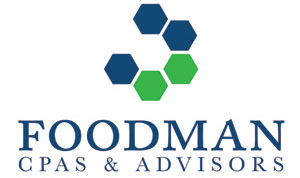Voices Can non-GAAP measurements be misleading? was published by Accounting today on 3/6/17.
Securities Exchange Commission reporting companies are more frequently utilizing non-GAAP financial measures if they believe that they will more accurately and completely reflect their results of operations or financial position. Non-GAAP financial measures are used as a “complement,” like bread and butter, to supplement the earnings reported under GAAP. Because GAAP does not permit their inclusion in reported financial statements, an independent auditor’s opinion does not cover non-GAAP financial measures.
Non-GAAP financial measures:
- Are numerical measures that may include or exclude GAAP measurements regarding the historical or future performance of a company’s financial status.
- Are positioned as providing additional acumen or insight into the reported entity.
- Purport to “link” information that is standard under GAAP reporting with what is considered customary or “tailored” reporting for revealing growing trends in “specialized industries” (i.e., law firms, health care, aircraft, oil & gas, media, retail, etc.).
- Are not prohibited. Shareholders, investors and bankers find them a valuable analytical tool. They are meant to provide more transparency and complement GAAP reporting. They are viewed as metrics that are easier to understand, and facilitate financial statement users’ comprehension of the financial status of a company; particularly when used to evaluate a company in a “specialized industry.”
- Must have strong disclosure controls.
- Must have a clear reconciliation with GAAP that clearly outlines the adjustments.
Non-GAAP financial measures are perceived to be more rounded story-tellers of a company’s financial position and results of operations because they back out certain non-recurring or non-cash expenses from a company’s profitability measurements. They separate what are considered “organic” changes in a company from unusual, non-representative underlying trend changes in a company. Non-GAAP metrics are also synonymous with a company’s internal performance indicators.
A forensic accountant can assist if there is an actual or potential litigation related to the use of non-GAAP reporting. The SEC has been clear in that their new enforcement actions will also impact risk in civil litigation. In December 2015, then-SEC Chair Mary Jo White stated that every audit committee ought to be ready to answer:
- Why are you using the non-GAAP measures, and how does it provide investors with useful information?
- Are you giving non-GAAP measure no greater prominence than the GAAP measures, as required under the rules?
- Are your explanations of how you are using the non-GAAP measures – and why they are useful for your investors – accurate and complete, drafted without boilerplate?
- Are there appropriate controls over the calculation of non-GAAP measures?
Businesses and their accountants need to be careful when determining whether the use of non-GAAP measures and the disclosure controls and procedures that are associated with it can be viewed as violating SEC guidance and raising accounting litigation red flags.
https://www.accountingtoday.com/opinion/can-non-gaap-measurements-be-misleading





